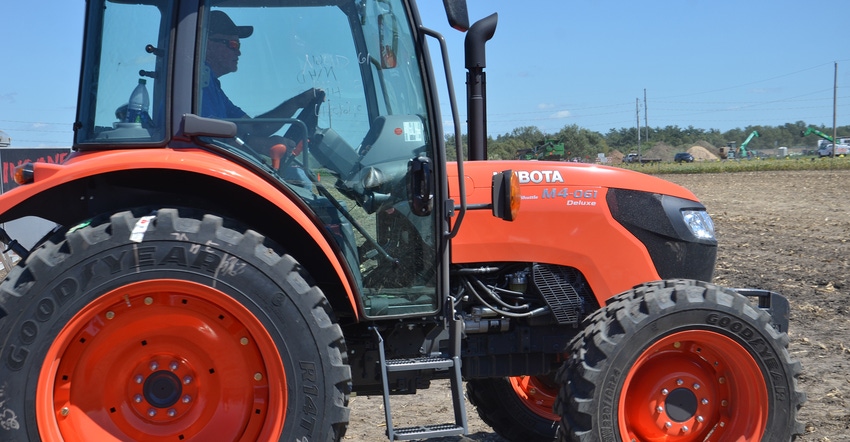
If you think “tread is tread” and you don’t need to know more than that to select a tire, you could wind up with tires on your tractor, combine or other machines that don’t perform in your conditions as well as they could. Tire manufacturers have used what they’ve learned over time to design tread that best fits specific uses. Tire makers often vary the depth of tread. Sometimes they change the angle, even partway across a tire, all to better fit specific conditions.
Standard designations help distinguish between various tread types and their intended uses. Two tire industry experts help explain how tread for ag tires is classified. They are Scott Sloan, ag products manager for Titan and Goodyear farm tires, and Brad Harris, manager of global field engineering for Firestone Ag.
“You should care about what tread style you get, because each is designed for a specific application,” Sloan says. “By choosing the wrong tread style, you won’t get the best performance out of your equipment. That could mean shortened life span for tires, poor traction or unnecessary field disturbance of the soil.”
Typical tread terminology
“For tractor tires, manufacturers use R1, R1W, R2 and R3 to signify the tread depth standard the tire was designed to meet,” Harris says.
Here are what these designations mean:
R1. This is the standard tread depth for the tire, based on the tire’s designed width and aspect ratio, Harris says. Sloan adds that an R1 tire has a bar-tread drive and is generally used for dryland farming.
R1W. Harris says this tread depth is at least 20% deeper than the same-sized R1 tire. Sloan adds that this tire is best suited for wet, sticky soils.
R2. This tread depth is twice the depth of an R1 tire, Harris says. Rice and cane farmers who work in wet soils are most likely to see this designation, Sloan says.
R3. This tread depth is shallower than the others — up to 65% the depth of an R1 tire. R3 tires are typically a button or turf design, Harris says.
Other tread types
Here are designations you may see on front tractor tires or some implement tires. They also refer to the tread design of these tires, Sloan says.
F1. This is a free-rolling, single-rib steer tire, best suited for wet, mucky soils and typically complementing rear R2 tires.
F2. This is a free-rolling, three-rib steer tire used in general dryland farming. It typically complements a rear R1 tire.
F2M. This is a free-rolling, four-rib steer tire used in general dryland farming. It also typically complements a rear R1 tire on a tractor.
I1. This is a free-rolling, multi-rib tire, used on a variety of towed implements.
FI. This is a free-rolling, multi-rib tire with the same tread pattern as an I1 tire, Sloan says. However, this tire is approved by the Department of Transportation for highway service speeds. Harris says the maximum approved speed for this tire is 60 miles per hour.
Learn how to interpret tire imprints in this related article.
About the Author(s)
You May Also Like




